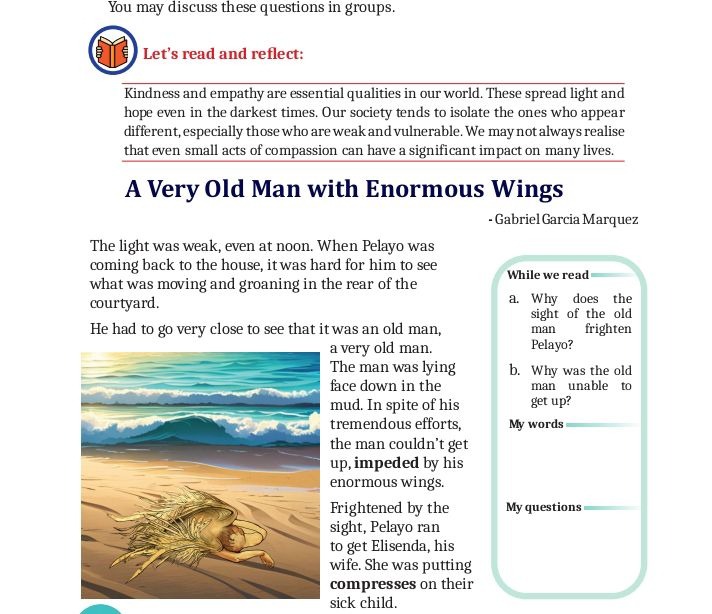Detailed Study Notes on The Old Man and the Sea by Ernest Hemingway
Detailed Study Notes on The Old Man and the Sea
Introduction
The Old Man and the Sea is a short novel written by Ernest Hemingway, first published in 1952. It is one of Hemingway's most celebrated works and played a crucial role in earning him the Nobel Prize in Literature in 1954. The novel tells the story of an aging fisherman, Santiago, who engages in an intense battle with a giant marlin in the Gulf Stream. The novel is often considered a classic of modern literature and is renowned for its deep themes of perseverance, resilience, and human dignity.
Plot Summary
The novel follows Santiago, an old fisherman from Cuba who has gone eighty-four days without catching a fish. Despite this streak of bad luck, he remains hopeful and determined. His young apprentice, Manolin, is devoted to him but is forced by his parents to fish with more successful men. However, Manolin deeply admires Santiago and continues to care for him.
On the eighty-fifth day, Santiago sets out alone into the deep sea, determined to break his unlucky streak. He hooks a massive marlin, much larger than his skiff, and an epic struggle begins. The old man battles the marlin for three days, enduring exhaustion, hunger, and physical pain. He respects the marlin for its strength and nobility, seeing it as both an adversary and a brother. Finally, he kills the marlin with a harpoon and ties it to his boat.
As Santiago sails back to shore, sharks are attracted to the marlin’s blood. He fights them off as best as he can, killing several, but they devour the marlin, leaving only its skeleton. When he finally reaches shore, Santiago is exhausted and defeated. He goes home and collapses into a deep sleep. The villagers, including Manolin, are amazed at the size of the marlin’s skeleton, realizing Santiago’s extraordinary achievement. Manolin pledges to fish with Santiago again, symbolizing renewal and hope.
Themes in the Novel
One of the central themes in The Old Man and the Sea is perseverance in the face of adversity. Santiago’s struggle with the marlin represents human endurance and the ability to push forward despite hardships. Even when faced with overwhelming obstacles, he never gives up, embodying the idea that true success is not in victory but in the struggle itself.
Another important theme is man’s relationship with nature. Santiago sees the sea and its creatures as part of a larger, interconnected world. He respects the marlin as a worthy opponent, not just as prey. This reflects Hemingway’s portrayal of the natural world as both beautiful and brutal.
The novel also explores isolation and loneliness. Santiago is alone at sea, fighting against nature and himself. His relationship with Manolin offers a contrast, highlighting the importance of human connection and mentorship.
Pride and dignity are also key themes. Santiago takes great pride in his skills as a fisherman. Even though he loses the marlin to the sharks, he maintains his dignity. His suffering and endurance make him heroic, reinforcing Hemingway’s idea of the “code hero” who faces hardship with courage and grace.
Character Analysis
Santiago is the heart of the novel. He is an old man, but his spirit remains unbroken. He is deeply knowledgeable about the sea and fishing, and his patience and resilience define him. His battle with the marlin is both a physical struggle and a test of his inner strength.
Manolin is Santiago’s loyal apprentice. Though his parents make him fish with more successful men, he remains devoted to Santiago. His role represents hope and continuity, as he is determined to learn from Santiago and continue the old man’s legacy.
The marlin is more than just a fish; it is a symbol of strength, beauty, and struggle. Santiago admires it as a noble creature, making his battle with it one of mutual respect rather than mere conquest.
The sharks symbolize destruction and the inevitability of loss. Despite Santiago’s best efforts, they strip away his hard-earned prize, showing the harsh realities of life and nature.
Symbolism in the Novel
Hemingway uses powerful symbols throughout The Old Man and the Sea. The sea represents life, full of unpredictability, challenges, and beauty. It is both nurturing and cruel, reflecting Santiago’s deep bond with nature.
The marlin is a symbol of Santiago’s greatest challenge and his ultimate test. It represents an ideal—something to strive for, even at great personal cost.
The sharks symbolize destructive forces, including fate, nature’s indifference, and the inevitable decay of success. They strip Santiago of his victory, reinforcing the theme that struggle, not victory, defines a person.
Santiago’s hands and wounds are reminiscent of Christ’s suffering, symbolizing endurance and sacrifice. His journey mirrors a spiritual trial, reinforcing his role as a Hemingway “code hero.”
Writing Style and Hemingway’s Philosophy
Hemingway’s writing style in The Old Man and the Sea is simple, direct, and powerful. He uses short, clear sentences and avoids unnecessary complexity, making the novel accessible yet deeply profound. His “Iceberg Theory” of writing is evident—what is left unsaid is just as important as what is written. The novel is rich in subtext, allowing readers to interpret deeper meanings.
The novel also reflects Hemingway’s philosophy of life, often referred to as the Hemingway Code Hero. Santiago embodies this ideal—he faces hardship with grace, remains undefeated in spirit, and finds meaning in struggle. This aligns with Hemingway’s broader themes of courage, endurance, and dignity in the face of inevitable defeat.
Conclusion
The Old Man and the Sea is more than just a story about a fisherman and a marlin; it is a meditation on life, struggle, and human resilience. Through Santiago’s journey, Hemingway explores profound themes of perseverance, pride, nature, and the dignity of labor. The novel’s simplicity is deceptive, as it carries deep philosophical and existential reflections on the nature of success and failure. Hemingway’s timeless narrative ensures that The Old Man and the Sea remains one of the most powerful and enduring works of modern literature.




Comments
Post a Comment
Please share your feedback and questions